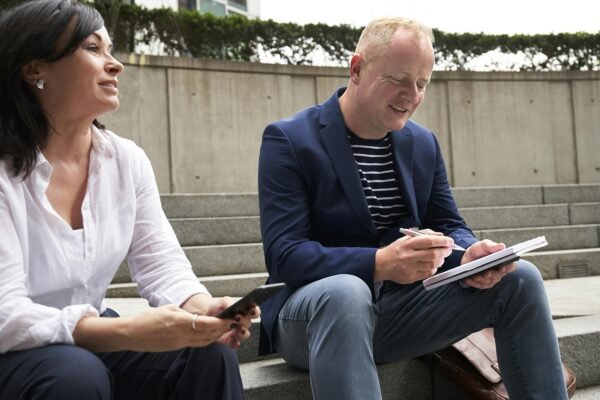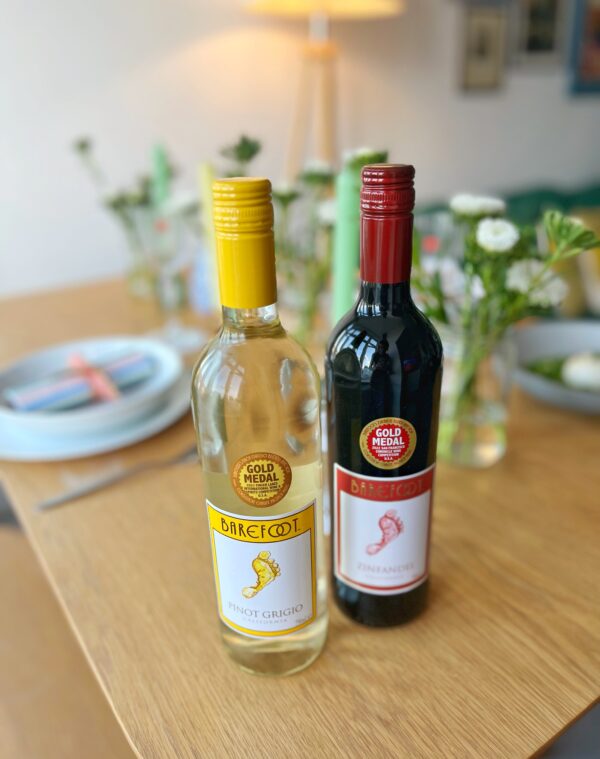
How to Stop Being a Miserable Brit

There’s a massive difference between ‘clinical depression’ and ‘minor glumness’ – this article is about the latter. Depression is an horrific experience that can be brought about by chemical imbalances and/or loneliness and/or dreadful times. There’s the oft-quoted statistic that 1 in 4 of us will suffer at some point. There are various remedies of which ‘snapping out of it’ isn’t one.
Minor glumness, on the other hand, is completely snappable out of. It’s nothing to do with chemical imbalances and much more to do with sinking into bad (dare I even venture to suggest ‘lazy’?) mental habits. This poor mental hygiene affects the other 3 in 4 of the population and if depression is a black dog, minor glumness is a nothing more than a greyish spaniel. And to confuse my metaphors and adages, you can teach a grey spaniel new tricks.
First up, if you tune into conversations you’ll pick up a background noise of low level grumbling. The weather, traffic, work, news, Trump, Brexit… pretty much anything will do. We just love a moan. The Australian’s call the Brits the ‘whinging Poms’, tarring the entire nation with the glumness brush. We have been bathed in the familiarity of negativity to the point of it becoming ingrained in our culture.
…if depression is a black dog, minor glumness is a nothing more than a greyish spaniel… you can teach a grey spaniel new tricks.
The problem with negativity is that it’s programmed into the human brain. Scientists call it ‘negativity bias’. We’re actually wired for gloom! Here’s how it works…
When we look around at our abundant lives, it’s easy to forget that your ancestors eked out a meagre living. They lived in small groups. It was very uncommon to meet someone you didn’t know and often dangerous when you did. Couple that with starvation, parasites, injury, no prescription drugs, no police – the word really was a dangerous place. The human brain was moulded by the need to survive and reproduce. It evolved with a hair-trigger readiness to react to danger. In fact, from a survival standpoint, if you failed to heed danger there would be no tomorrow.
For example, your great great great great great great great great great great grandpa could make two kinds of mistakes: First, thinking there was a snake in the bushes when there wasn’t one, and second, thinking there was no snake in the bushes when there actually was one. The cost of the first mistake was a pounding heart and needless anxiety. The cost of the second one was death. Consequently, we evolved to make the first mistake a million times to avoid making the second one even once.
Cut to today and the dangers have receded but the same brain circuitry is continually scanning for danger. Indeed, evidence suggests the brain scans the environment 5 times a second, looking for danger! This is just the way it is. It’s not just you, it’s the human race. Negativity bias is always lurking in the background.
The result is that negativity bas tilts your world towards immediate survival, but away from happiness, peace, contentment and joy. It’s why negative news gets reported and spread so much more readily. It’s why we can’t turn away from a car accident or two people fighting. It’s why one bad driver ruins your commute and one awkward customer shatters your day. It’s why it’s so much more tempting to relate to others through complaining and gossip rather than through gratitude.
The Australian’s call the Brits the ‘whinging Poms’, tarring the entire nation with the glumness brush.
A major point worth noting before I cut to some top tips – I’m not from the unbridled Pollyanna school of positive thinking. Not only is, ‘Oooh, cancer. Thanks Doc. What a great opportunity to get a new wig,’ not very funny, it’s also plain ridiculous. But a sense of what I call ‘realistic optimism’ will, I feel, massively increase your odds of having loads more amazing days. Realistic optimism reels you in from the Pollyanna end of the spectrum, but only by a bit. A new day really does herald a new dawn (one that you actually take a moment to notice) and it is up to you which attitude you select.
Top Tips
Rule #6:
I love Ben Zander’s ‘rule number 6’ in which he recounts a story of an American President who was getting very serious and heavy in a meeting with a leader of a foreign nation. His aide approached him and said, ‘Mr President Sir, please don’t forget rule number 6.’
The other head of state looked quizzically at the US President and, as you would, she inquired, ‘What is rule number 6?’
And the President beamed and said, ‘Rule number 6 is ‘don’t take yourself too seriously’.’
‘And the other rules?’
The president’s eyes were now twinkling. ‘There aren’t any,’ he grinned. ‘Just rule number 6.’
And, nice story as it is, it is also a good rule to live your life by. Sure, life can be a serious business and you’ve contracted this terrible disease called ‘responsibility’, but that doesn’t mean you have to become deadly serious. Lighten up and stop taking yourself and life so seriously.
Switch off your ‘judge-ometer’
You know that nagging internal voice, the inner-critic that makes assumptions about everyone and everything, your judge-ometer that’s set to ‘snap judgement mode’? It’s wearing you out. Switch it off. As Langer says ‘we are frequently in error but rarely in doubt’. Instead, take 4 seconds, in your head, to send warmth and love to everyone you meet.
Park your troubles (you can always come back to them if you miss them?)
An interviewer asked (scandal-ridden Olympic ice-skater) Tonya Harding how she could concentrate on her routine with gossip and bad news swirling around her. Harding’s answer? As she enters the rink, she picks a spot on the wall by the door, touches it with her finger, and pretends to store all her worries in that one spot. Then she skates with a clear mind, knowing she can resume her worrying when she leaves the rink.
What’s the best that could happen?
Learn to reframe your inner dialogue. Instead of running with the brain’s default negativity, challenge yourself with a series of better questions such as ‘what’s the best that could happen? And ‘how would the best version of me deal with this situation?’ Asking yourself a better question often leads to a more creative solution.
Finishing with some great news, your brain has what’s called neuroplasticity. It changes. It can rewire itself. The more you practice these new ways of thinking, the easier they become. Yes, it takes time and effort, but you gradually create a new you.
By: Andy Cope

Andy Cope is the author of Happiness – your route-map to inner joy. Available now on Amazon. Find out more about Andy at http://www.artofbrilliance.co.uk/















































